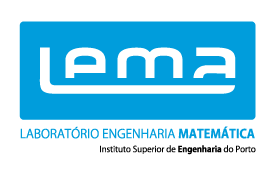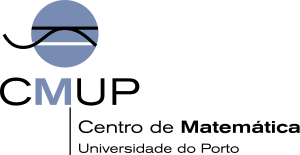
|
|
The 86th European Study Group with Industry ISEP/IPP, School of Engineering, Polytechnic of Porto 7 - 11 May 2012 |
|
|
|
|

|
|
|

|
|
|

|
|
|

|
|
|

|
|
|

|
|
|

|
|
|
|
Problem 1: Service scheduling in garden maintenance
Company: Neoturf
The number of services per client and per year is previously determined at the beginning of the year, with differences between the Spring/Summer and Autumn/Winter periods There are several maintenance activities, as well as several different machines that may be allocated to these activities Some clients have a fixed day for maintenance that cannot be changed There are some unpredictable variables that may imply a sudden change in the scheduling (weather, last minute cancelations, etc) Their costumer portfolio is geographically spread over a wide region, with the distance between different clients thus becoming an important factor in the final scheduling Problem 2: Optimal scheduling of the engine repair process
Company: TAP Maintenance and Engineering Problem 3: Modelling power networks
Company: INESC A power
network (nodes, branches)
is regulated by
flow equations based
on the 1st and 2nd
Kirchhoff Laws. LAW 1: the net flow in a node of the network is
zero: The network
topology is a
graph that may
be described by
a branch-node incidence
matrix T (composed of elements with values -1, 1 or 0 only). Nodal
injections are described by a vector L.
The 1st Law may be translated into the matrix equation LAW 2: the flow in a branch is proportional to the
difference in potential P between
its extreme nodes:
This
may be globally translated into a matrix equation where B is a diagonal matrix: F=B TtP The
combination of the two Laws produces a well-known circuit equation T B Tt
P = L or Y P = L where Y
is sometimes called a nodal-admittance matrix and P is a vector of nodal potentials. Question 1 Admit
that in a network with n nodes and m branches, one has available k
measurements, with k > n. These measurements may by on a mix of injections L, nodal potentials P and branch flows
B. Admit
that these measurements are contaminated with noise. Therefore, the
measurements do not form a set compatible with the circuit equation or the
Kirchhoff Laws. Admit
that this noise is Gaussian, and independent for each measurement. Admit that
the variance is any case is small. One
wishes therefore to find a set of Potentials Pˆ that would minimize some reasonable definition of an error
between the measurement vector and the vector of values (F, L or P) that is compatible with the circuit
equations. Question 2 Admit
that some of the measurement errors are gross errors (much larger than the
errors admitted previously), and that it is unknown where such gross errors
occur. These may severely contaminate the estimation of Pˆ. Discover which
measurements contain gross
errors (instead of
small errors) and
achieve an estimation of Pˆ ignoring these gross errors. Question 3 Admit
now that there are switches scattered in the network branches. They can assume
a state of open (S = 0) or closed (S = 1). An open switch interrupts the branch
flow and eliminates this branch from the network (namely, from matrix T). Admit
that there are measuring devices that report each switch status. Assume
that, beside the k measurements of (F,
L or P), some switch status signals are missing – so, the network
topology becomes unknown. The
challenge is double: to guess correctly the network topology and thus to
estimate Pˆ. Problem 4: Modelling fiber flow in fiberboard manufacturing
Company: Sonae Industria - Produção e Comercialização de Derivados de Madeira, S.A Problem 5: Modelling drying process in paper manufacturing
Company: Euroresinas - Indústrias Quimicas, S.A. |